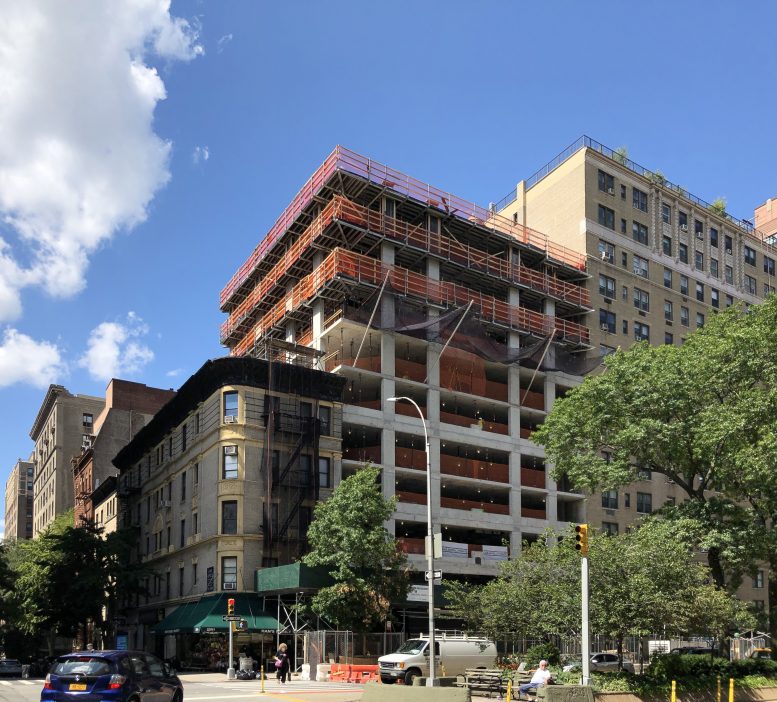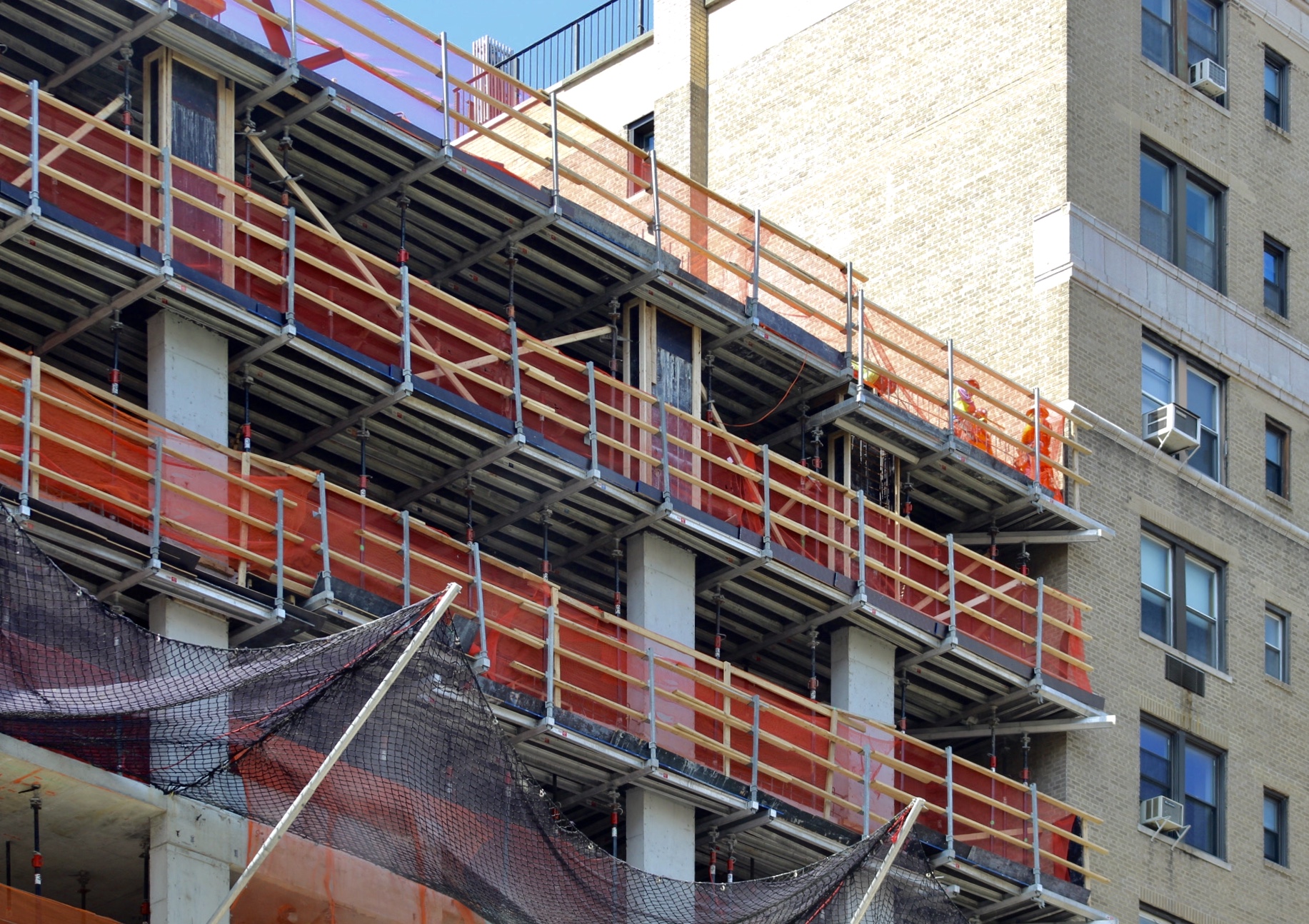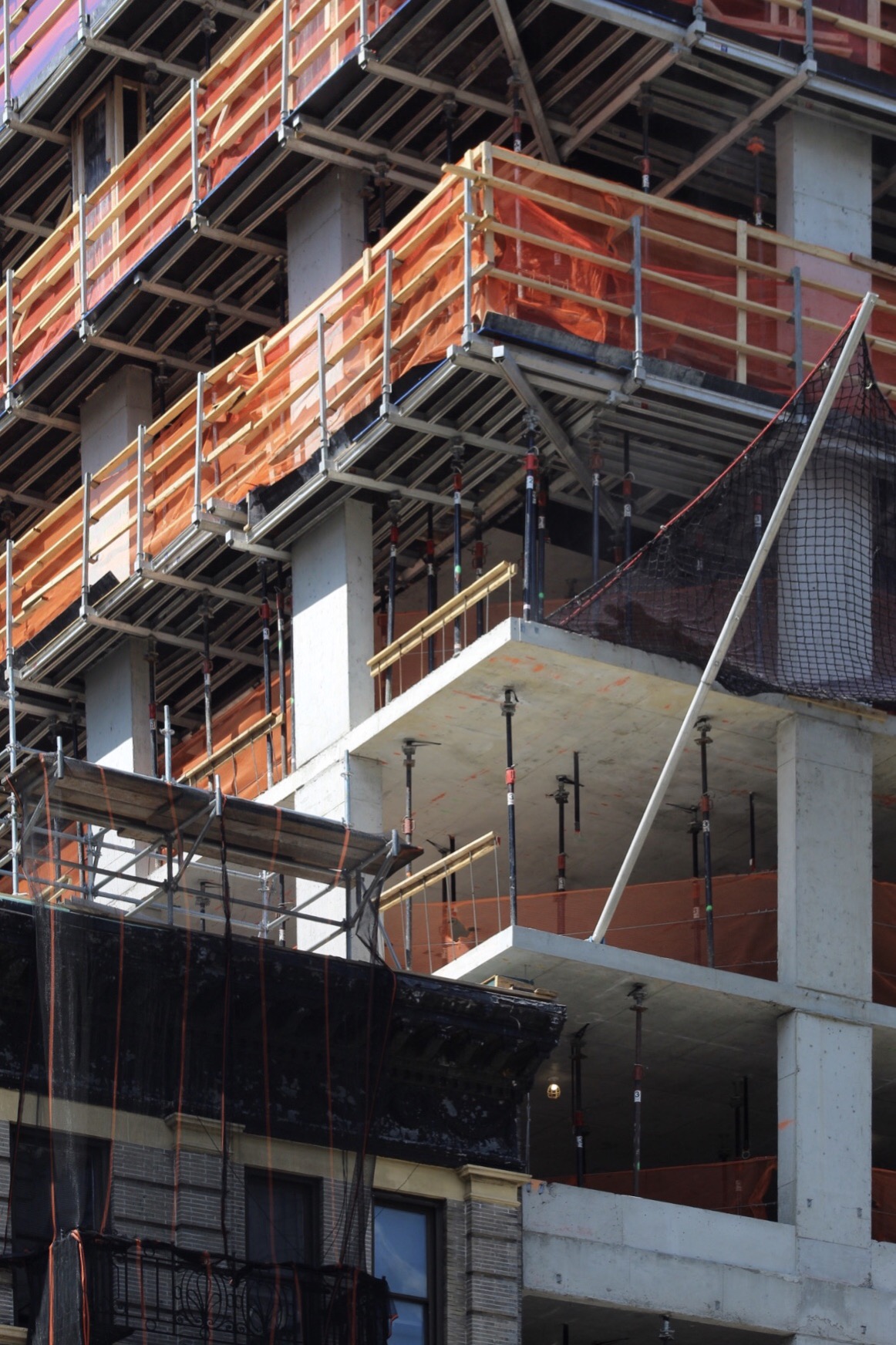Construction has passed the halfway mark on 2505 Broadway, a 19-story residential development on Manhattan’s Upper West Side. Designed by ODA Architecture LPC and developed by Tomer Yogev of Adam America Real Estate, the 210-foot-tall structure will yield 44 units. The land was purchased for $50 million by MSD Partners in September 2018 and required the demolition of two low-rise buildings before excavation could commence the following year.
Recent photos show the state of work at the site, which is located between West 93rd Street and West 94th Street, right by the 96th Street subway station with access to the 1, 2, and 3 trains. A plethora of wooden formwork envelops the upper floors of the reinforced concrete superstructure as the newly poured columns, walls, and floor slabs set.
No official rendering has been released for 2505 Broadway, though it’s been reported that the design will incorporate a cantilever. A possible comparable project is 100 Norfolk Street, a Lower East Side residential development from ODA that features multiple cantilevers. Also unclear is whether the exterior will receive a façade treatment or will be left as bare concrete.
2505 Broadway will span 75,000 square feet, with homes averaging 1,934 square feet apiece. There will also be 5,000 square feet of ground-floor retail space facing Broadway. Amenities include a golf simulator room, a dog wash, and a library lounge. Other nearby transit options include the B and C trains at the 96th Street subway station on Central Park West.
A completion date for 2505 Broadway has been set for July 2021.
Subscribe to YIMBY’s daily e-mail
Follow YIMBYgram for real-time photo updates
Like YIMBY on Facebook
Follow YIMBY’s Twitter for the latest in YIMBYnews









The historical hold-out building on the corner is the context needed for a city that will soon be 400 years old.
People don’t visit Europe to see the post-war buildings. People visit NYC to see a uniquely American experience since its founding.
Our current historical preservation laws need to be revised.
Historic buildings are wonderful, and on any walk around the UWS you will find oodles of them. Huge swaths of the neighborhood are covered under a series of historic districts. Take a walk on Riverside Drive or Central Park West and you will find some of the loveliest prewar architecture in the city. LPC is doing its job in the UWS.
Strongly disagree with these ideas: that NYC should be like a city in Europe (it shouldn’t; it should be like NYC); that cities in Europe are composed entirely of historic buildings (they aren’t; European modern architecture is incredibly vibrant); that we should design the city so that “people will visit it” (NYC is for New Yorkers, not just tourists); that NYC somehow is losing its “uniquely American” qualities (its very vibrancy, constant change, willingness to try new things, are incredibly American).
We need new buildings. They shouldn’t all look just like old buildings. There are SO MANY old buildings still in NYC. The city can grow and not lose its character. That’s exactly what is happening today in a place like the UWS.
Alright, so far this looks pretty simplistic, but not bad. However, if a cantilever will be coming into play, I don’t really know what to expect.
The cantilever is on a job two blocks south, Broadway at 91 St.
New family size condos on the UWS aren’t selling, and 44 new 2,000 square foot homes aren’t going to sell on Broadway at 93rd.
Watch for the change in plans.
I saw the 3D rendering from the foreman’s notebook, thankfully no cantilever. It will have an off white facade. I am so glad the owner of the small building on 93rd did not sell his building to the developer; I reached out to him and he said he wouldn’t, he cares about his tenants and the neighborhoods prewar and 19th century vibe.
The corner building is from 1908 and is not 400 years old. Next thing you will want to preserve the tenement buildings from 150 years ago. Don;t forget someone has to live in these buildings. Progress is sometimes good and the architect who designed the building is designing great buildings and truly cares about architecture. Cannot wait to see the rendering.